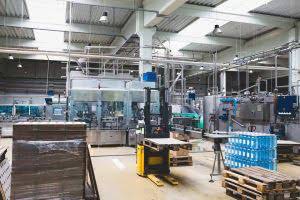
To do this, figure out how much of the direct materials you already have, then add the total cost of the new direct materials. Finally, when you reach the end of the period, subtract whatever ending inventory you still have. This way, you’re left with the costs of only the materials you used during this period. These terms encompass the costs incurred in producing goods, including direct materials, direct labor, and manufacturing overhead. By using these terms interchangeably, it is acknowledged that they all refer to the overall expenditures involved in manufacturing a product.
Importance of Cost Management Systems
Changing production methods to better utilise raw materials is another way manufacturer can reduce direct material waste. Direct materials are the inventory stock items used to create a finished product. Direct materials include raw materials, components and parts directly used in the production or manufacture of finished goods. As you can see, by collecting cost data and calculating it accurately, businesses can optimize cost management and set the right price for their products to gain a competitive advantage. The next step is to calculate the costs of utilities (electricity, water, or gas) that are directly used in the manufacturing process (for example, fuel used to operate the production equipment).
How to calculate Total Manufacturing Costs

Basically, it’s all the indirect costs that keep the production wheels turning. Manufacturing overhead costs include indirect labor and materials, plus all the other costs incurred in providing and maintaining a factory full of machinery. This includes equipment depreciation, utilities and property taxes or rent.
What is product cost or manufacturing cost?

Obtain the inventory valuations at the start and end of the period under review. The difference between opening inventory plus purchases, less the Accounting Periods and Methods closing inventory, is the value of inventory used for production in that period, or in other words, the total direct material cost. The cost of goods manufactured is an important KPI to track for several reasons.
Streamline manufacturing data collection with Cin7
- If the direct labor costs are high, analyze the efficiency of your employees and introduce training programs to help boost their skill set.
- By understanding the intricacies of cost allocation, companies can optimize their processes and stay competitive in the market.
- Direct materials are all the materials you bought and used to make your final product.
- As a result, you can points of waste in the supply chain that you might otherwise have overlooked.
- The first step in calculating your manufacturing costs is identifying and calculating all your direct costs.
- If the cost contributes directly to making the product, it’s a direct cost.
Direct material costs are law firm chart of accounts the raw materials that will be used to make the finished product. The value of these raw materials increases over the production of the product. Raw materials go through any number of types of operations in the course of manufacturing, such as welding, cutting, etc. When figuring out direct material costs, it’s important to distinguish between direct and indirect. Indirect costs are subsidiary material costs, such as shop supply costs, perishable tools and equipment costs.

- Work in process inventory, waste, and scrap all need to be accounted for as well.
- The Total Manufacturing Cost for one smartphone manufactured by ABC Electronics is $75.
- It includes the cost of raw materials, direct labor, and manufacturing overhead.
- Calculating and analyzing total manufacturing costs provides invaluable insights into your expenses and is a foundation for informed decision-making.
- Our collaborative platform lets you share files and comments with everyone no matter where or when.
- Use our Gantt chart project view to set resources and costs, such as hourly rates for workers and non-human resources, such as equipment, suppliers, etc., for every stage of your production cycle.
- Do not forget to account for waste and scrap that occur naturally during production.
Direct labor cost is computed by multiplying the total hours worked by the labor rate per hour, including any additional benefits or payroll taxes. The calculations for all these costs give the manufacturer a clear picture of what it total manufacturing cost formula costs to produce each dog house and, therefore, what price the dog house should sell for. This allows the manufacturer to determine their profit margin and also productivity level, for producing more dog houses in the same amount of time could lead to greater profits if there’s a market need. Total manufacturing cost is calculated by adding a business’s material, labor, and overhead expenses.
